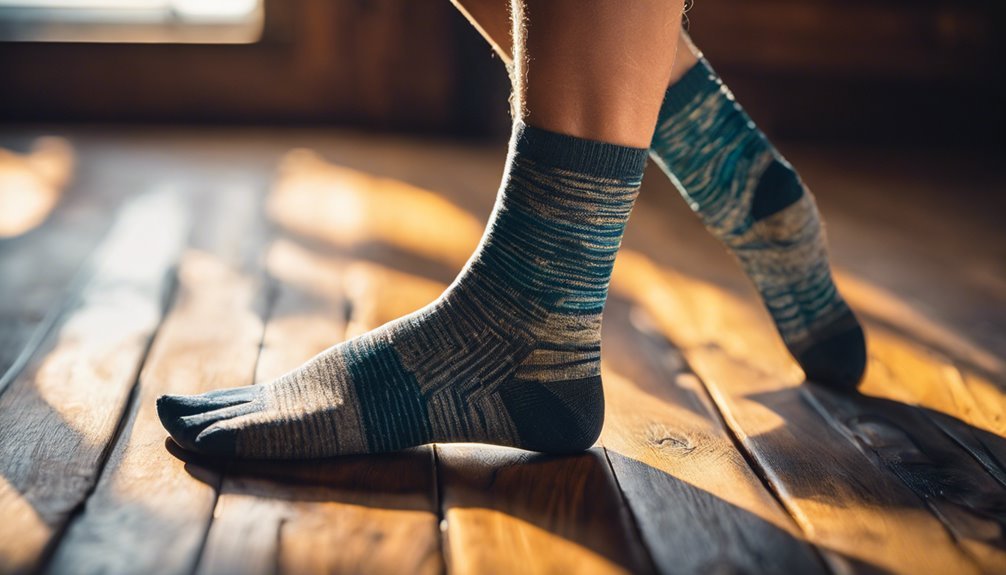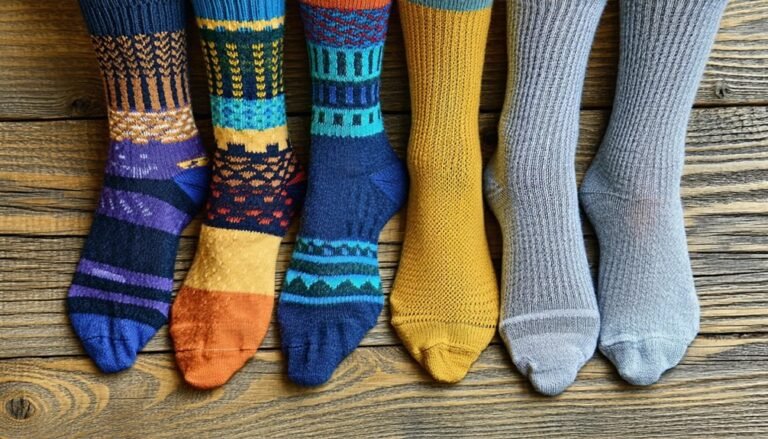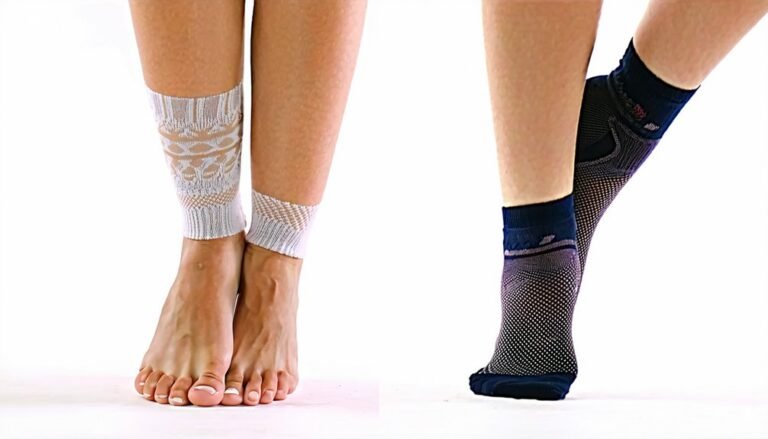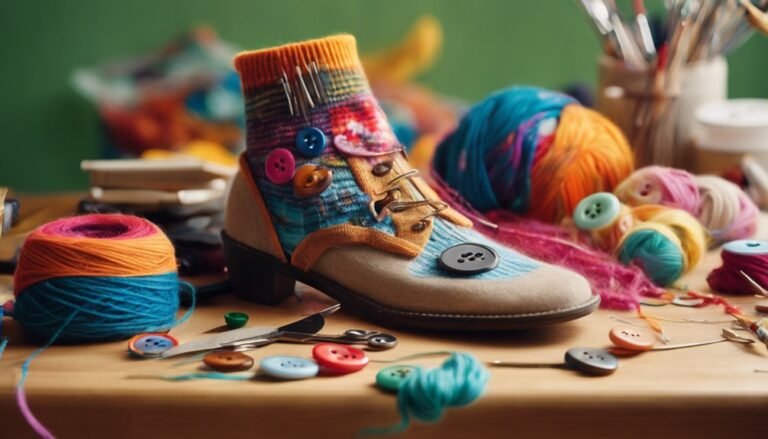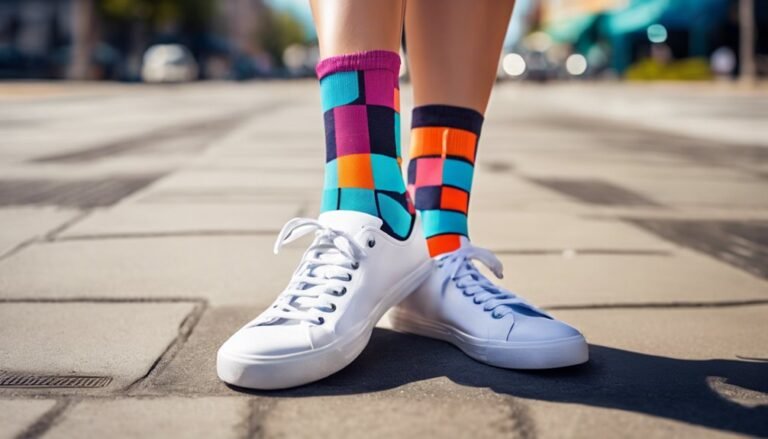Can Socks Really Prevent Athlete’s Foot? What You Need to Know
Wearing the right socks can indeed help prevent athlete's foot. Choose moisture-wicking materials like merino wool or synthetic blends that draw sweat away and improve ventilation. Avoid cotton, as it retains moisture, creating an ideal environment for fungi. Additionally, opt for socks designed with ventilation panels and change them regularly to maintain dryness. By managing moisture effectively and selecting appropriate sock styles, you can greatly reduce your risk of infection. For more tips, continue exploring the details.
Understanding Athlete's Foot: Causes and Symptoms
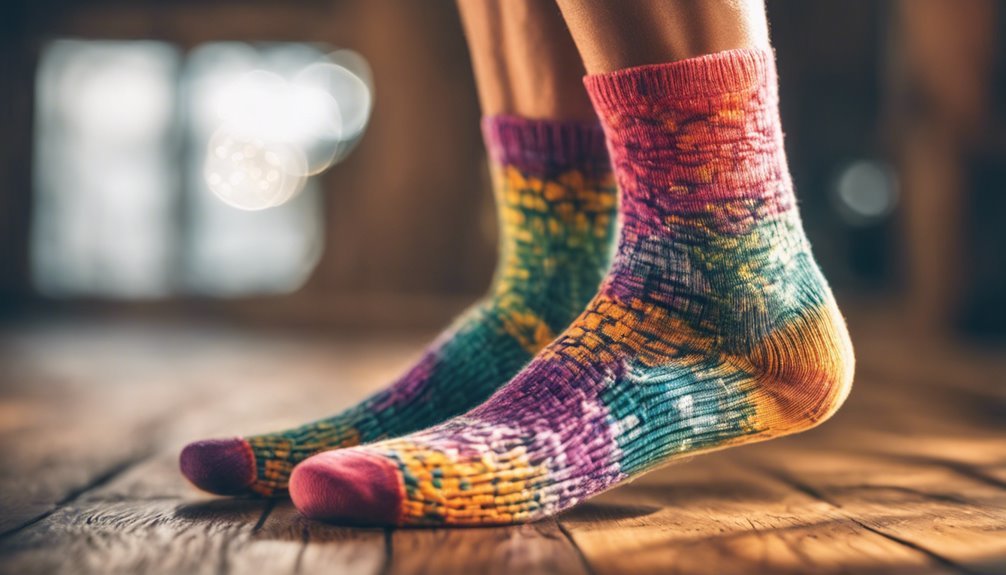
Although athlete's foot is a common fungal infection, many people may not fully understand its causes and symptoms. This infection is primarily caused by dermatophytes, fungi that thrive in warm, moist environments, often affecting the skin between your toes. You might notice common symptoms such as itching, burning, and peeling skin, particularly in those areas. Redness and inflammation can also occur, and in some cases, blisters may form. If left untreated, the infection can spread to your toenails or other parts of your body, leading to more discomfort. It is crucial to recognize these symptoms early on to seek appropriate treatment and maintain your freedom from this pesky condition. Understanding athlete's foot empowers you to take preventive measures effectively.
The Role of Moisture in Fungal Growth
Moisture plays an essential role in the growth of fungi, as these organisms thrive in damp environments. When your feet sweat, moisture retention creates an ideal fungal environment, making it easier for athlete's foot to develop. The combination of heat and humidity in your shoes can lead to increased fungal activity, leading to infections. It's important to manage moisture effectively to prevent such conditions. Wearing socks that wick away sweat can help keep your feet dry, reducing the likelihood of fungi taking hold. Additionally, keeping your feet clean and allowing them to breathe can further minimize moisture retention. By understanding how moisture influences fungal growth, you can take proactive steps to protect your feet from athlete's foot.
Choosing the Right Sock Material
To effectively combat athlete's foot, selecting the right sock material is essential. You should prioritize fabrics known for their moisture-wicking properties, like merino wool or synthetic blends. These sock materials not only draw moisture away from your feet but also promote fabric breathability, reducing the risk of fungal growth. Avoid cotton, as it tends to retain moisture, creating a damp environment that fungi thrive in. Look for socks with ventilation panels or mesh designs that enhance airflow, keeping your feet dry and comfortable. By choosing the right materials, you're investing in your foot health and maintaining the freedom to enjoy your activities without the worry of athlete's foot. Make informed choices for a healthier, happier you.
Sock Styles and Their Impact on Foot Health

While selecting the right sock style may seem trivial, it can notably impact your foot health. For instance, compression socks can enhance circulation, reducing swelling and discomfort, especially during prolonged activities. They're particularly beneficial if you're on your feet all day or engaging in sports.
On the other hand, choosing socks made from breathable fabrics is essential for moisture control. Materials like merino wool or synthetic blends wick away sweat, helping to prevent the damp environment that fosters athlete's foot. Avoid cotton, as it retains moisture.
Ultimately, balancing compression and breathability can greatly improve your foot health, keeping them comfortable and reducing the risk of infections. Make informed choices, and your feet will thank you!
Additional Tips for Preventing Athlete's Foot
Since athlete's foot thrives in warm, damp environments, it is crucial to adopt several preventive measures to keep your feet dry and healthy. Focus on maintaining good foot hygiene and consider the following tips:
- Choose breathable footwear: Opt for shoes made from materials that allow air circulation, helping to keep moisture at bay.
- Change socks regularly: If your feet sweat, don't hesitate to change your socks throughout the day to maintain dryness.
- Use antifungal powders: Applying these powders can help absorb moisture and reduce fungal growth.
Frequently Asked Questions
Can Wearing Socks That Are Too Tight Cause Athlete's Foot?
Wearing tight socks can trap moisture like a sealed jar, creating an environment for athlete's foot to thrive. Proper airflow is essential; choose breathable materials to reduce moisture retention and avoid potential fungal infections.
Do Laundry Detergents Affect Fungal Growth on Socks?
Laundry detergents can influence fungal growth on socks, especially when combined with certain laundry additives. The materials of your socks also play a role, as some fabrics retain moisture more than others, promoting fungal development.
How Often Should I Replace My Socks to Prevent Athlete's Foot?
Think of your socks as a shield. To maintain sock hygiene and effective moisture management, replace them every three to six months. Fresh socks keep your feet dry and free from fungal troubles, ensuring your freedom to roam.
Can Athlete's Foot Spread Through Shared Socks?
Yes, athlete's foot can spread through shared socks due to fungal transmission. To minimize risks, prioritize sock hygiene by washing regularly and avoiding sharing footwear, ensuring you maintain healthy, dry feet to prevent infection.
Are Compression Socks Safe for Preventing Athlete's Foot?
Compression socks can be safe for preventing athlete's foot, offering compression benefits and moisture management. They help keep feet dry and promote circulation, reducing the risk of fungal infections while providing a comfortable, supportive fit.

